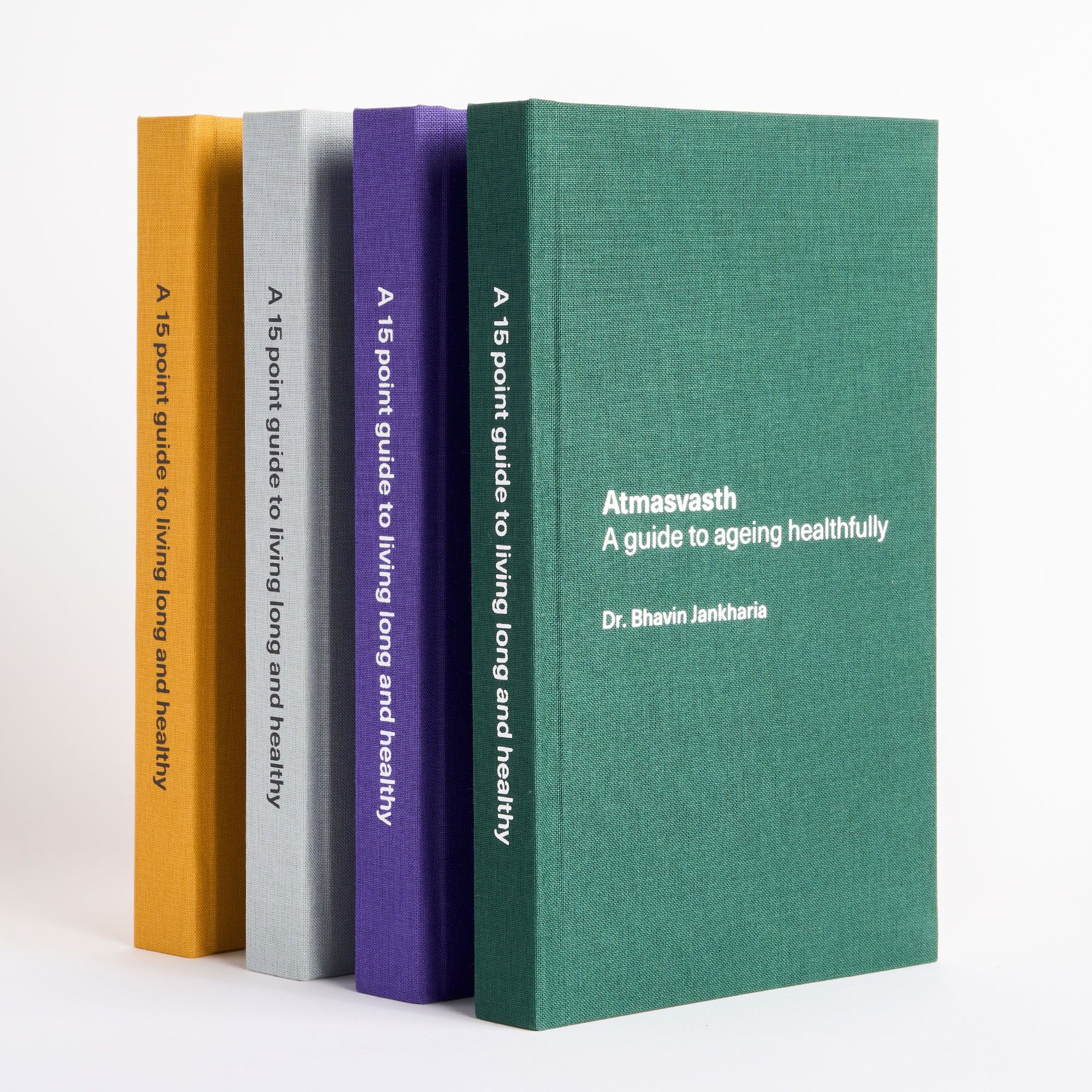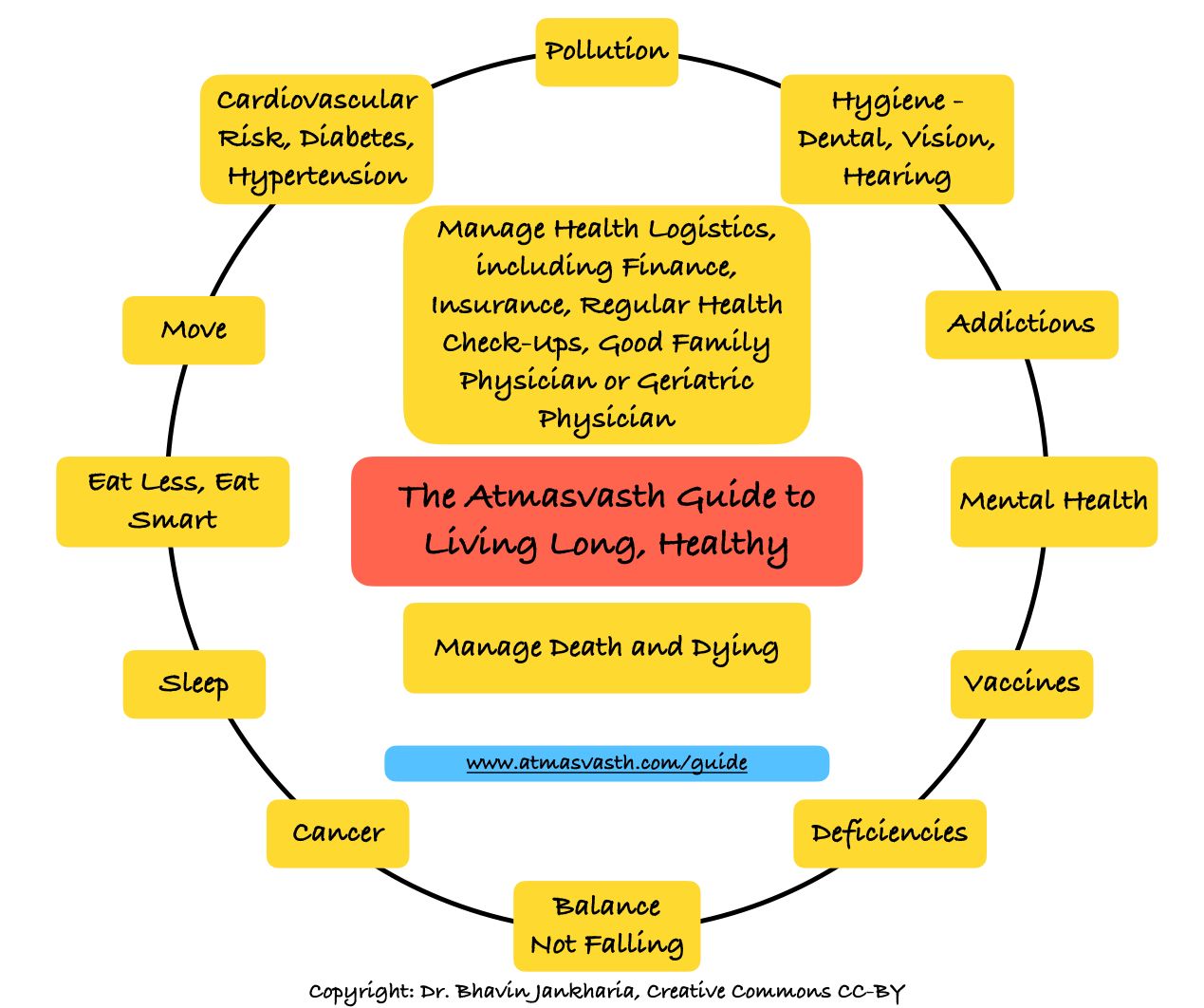Food Updates - II - Healthy Nutrition for Longevity: Deconstructing the 2024 ICMR-NIN Dietary Guidelines - Part I

The Book - Kindle Version Now Available Worldwide

The Detailed 15-Point Guide to Live Long, Healthy

Audio
Video
The video is on YouTube.
Sign up for Atmasvasth
The Atmasvasth Guide to Living Long, Healthy
No spam. Unsubscribe anytime.
Text
Last week, I discussed a re-evaluation of ultra-processed foods (UPF). While fundamentally, anything that comes in a packet should be consumed with care, not all so-called UPFs are bad and sometimes, you don’t really have a choice but to use UPFs to get adequate nutrition at a reasonable price.
The Indian Council of Medical Research (ICMR) and the National Institutes of Nutrition (NIN) have together published a comprehensive updated document titled “Dietary Guidelines for Indians - 2024”, which is worth a read [1]. In any case, here is a summary, with some added updates and new data.
There are 17 guidelines, but I have excluded those for infants, children, the old and infirm and pregnant and lactating women, as well as the guidelines related to physical activity and a healthy lifestyle, which I have covered in far more detail anyway. There are finally 10 nutrition guidelines to go through, 4 of which we will cover this week and the other six, the next.
Guidelines:
1. Eat a variety of foods to ensure a balanced diet.
2. Eat plenty of vegetables and legumes.
3. Use oils/fats in moderation; choose a variety of oil seeds, nuts, nutricereals and legumes to meet daily needs of fat and essential fatty acids (EFAs).
4. Obtain good quality proteins and essential amino acids (EAA) through appropriate combination of foods and avoid protein supplements to build muscle mass.
5. Restrict salt intake.
6. Consume safe and clean foods.
7. Adopt appropriate pre-cooking and cooking methods.
8. Drink adequate quantity of water.
9. Minimize the consumption of high fat, sugar, salt (HFSS) and ultra-processed foods (UPFs).
10. Read information on food labels to make informed and healthy food choices.
The document focusses predominantly on a plant-based diet in an attempt I guess to steer the country towards being more vegetarian. While an overall plant-based food lifestyle is a good idea, those who eat meat and fish should just go ahead and substitute food items accordingly.
1. Eat a Variety of Foods to Ensure a Balanced Diet
Inclusion of non-starchy fresh vegetables and green leafy vegetables in every meal. Take at least 300 grams of fruits in every meal.
Consuming at least 50% of cereals and other grains as whole grains (minimally polished) for adequate nutrients and fibre.
All cereal (or millet) based diets are accompanied with adequate pulses or beans for good quality protein and fibre.
Consuming adequate quantities of nuts, oilseeds, fatty fish and restricting cooking oils to 25g to 30g per day.
Restricting meal frequency to two to three times a day.
Avoiding ultra-processed foods (UPFs) and foods high in fat, sugar and salt (HFSS).
Avoiding sugar or restricting to 20g to 25g per day (adults).
Not snacking in between and consuming healthy beverages
A balanced diet is always better than a restrictive or faddist one (e.g. keto, low carb), in our atmasvasth goal to live long, healthy. A balanced diet helps us achieve a long healthspan, while diets focussing on slimming and weight loss just never work over the long term.
Our bodies need a little bit of everything and this summary of what constitutes a plant-based balanced plan is good.
2. Eat Plenty of Vegetables and Legumes.
This has always been true. In Mar 2021, I said this “So what is our matka here? Eating 2-3 portions of fruits and 2-3 portions of vegetables a day will allow us to live longer and healthier. As simple as that. And while “an apple a day may not keep the doctor away”, “one apple, one banana, one cup of grapes, a half cup of bhendi and a half cup of palak, will definitely help keep the doctor away”.
A recent study headed by Andrew Glenn [2] found that those who had a predominant plant based diet with nuts had a lower risk of coronary artery disease and stroke.
3. Use Oils/Fats in Moderation; Choose a Variety of Oil Seeds, Nuts, Nutricereals and Legumes to Meet Daily Needs of Fat and Essential Fatty Acids (EFAs).
This guideline goes into quite a bit of detail.
Include foods rich in alpha-linolenic (ALA)/n-3 PUFA such as nuts/oil seeds, soybeans, grains/millets, green leafy vegetables and fenugreek seeds.
Prefer marine fish such as salmon, mackerel, trout and tuna (~200gm/week) which are good sources of preferred LC n-3 fatty acids.
Moderate the use of high n-6 PUFA containing oils.
Limit the use of high saturated-fat containing oils/fats such as ghee, butter etc.
Minimize consumption of ready-to-eat fast foods, bakery foods and processed foods which may contain trans fats and saturated fats.
Avoid using partially hydrogenated fats (vanaspati) as the cooking medium as they contain trans-fats and saturated fats.
Repeated heating of cooking oils generates harmful oxidative (polar) compounds and hence must be avoided.
This is more or less standard advice, though one of the problems related to EFAs in vegetarians hasn’t completely been addressed. I wrote about this in Jan 2022, given the conflicting evidence at the time that hasn’t changed. Basically, if you eat fish then there is nothing further to be done. If not, then there is no good evidence that supplements work. I used to take Omega-3 supplements but have since stopped because of the lack of evidence they work and the fact that predominant vegetarians like me (parents, other relatives living long) have done pretty well without these supplements.
This guideline in a way is really a continuation of the earlier one about eating plenty of vegetables and legumes with the addition now of nuts along with the avoidance of transfats, both in cooking and as part of our daily food intake.
4. Obtain Good Quality Proteins and Essential Amino Acids (EAAs) Through Appropriate Combination of Foods and Avoid Protein Supplements to Build Muscle Mass.
There is a lot of detail in this guideline including tables showing foods and their protein and amino acid content.
Cereals have lower levels of lysine and higher levels of sulphur-containing amino acids (methionine and cysteine). The reverse is true for pulses.
Combining cereals with pulses in the ratio of 3:1 will improve the quality of protein in a meal.
Most athletes can get the recommended amount of protein through appropriate selection of food items. Protein powders are unnecessary and can cause harm.
Prolonged intake of large amount of protein powders or consumption of high protein concentrate has been associated with potential dangers, such as bone mineral loss and kidney damage.
Non-vegetarians can meet their quality protein needs by taking recommended level of fish/poultry/meat/egg.
I have always struggled with a protein intake of over 50g per day. It is not easy without supplements, but plant and whey protein supplements are not easy to digest (literally and figuratively). These days I find the new Amul protein 15g buttermilk and lassi packs, very good alternatives, though if you dislike dairy products as a protein source, then you would need to figure out alternatives on your own.
Obviously, if you are a regular meat and fish eater, then none of this is really an issue.
Next week, I will discuss the remaining 6 guidelines and end with my overall take on how all of this affects us.
Footnotes
1. https://main.icmr.nic.in/sites/default/files/upload_documents/DGI_07th_May_2024_fin.pdf
2. Glenn AJ et al. Portfolio Diet Score and Risk of Cardiovascular Disease: Findings From 3 Prospective Cohort Studies. Circulation. 2023 Nov 28;148(22):1750-1763.


